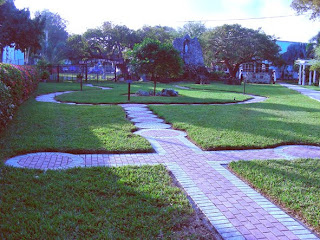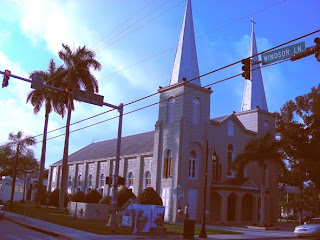Thing One and Thing Two were growing rapidly and their presence were causing more anxieties on the farm: bitter and sweet for the two humans who have a weakness for canine antics, confusion to the three dogs in residence, and the front and backyards densely plastered under unwanted organic fertilizer.
Thing One and Thing Two had to go. This last Wednesday I finally sat myself down and whipped out an ad that said "free puppies to good homes" and dispatched it by email to the Sunday Classifieds, then prayed to Bishop Sheen for help at Sunday Mass. I picked Bishop Sheen because I'd seen him on EWTN the day before. I'd thought that the impish grin on his face while he waited for audience's reaction to his joke had to be the best definition for the word "winsome." While I kneeled to pray I saw that grin again. "Humor me, dear Bishop: find a home for the puppies."
We were flooded with phone calls that day, and that day only. Thing One went to a newly wed couple who practically swooned on first sight; Thing Two struck smitten a thirty-something man who showed up with his Mom in the driver's seat. He called it "Horse" on catching first sight of the dog through the glass door. "Ain't you gonna take your baby?" asked the mom. "Yes I'm gonna take my baby." was the reply and he went with the dog in his arms and sat both of them in the passenger's seat. I had the slightly dreamy feeling that the mother and son pair had walked straight out of a Flannery O'Connor story.
The phone calls and visits made our day unusually sociable. I thanked Bishop Sheen for his humor and gave him all the credit. As the excitement calmed a bit, I went back to look at the Classifieds and it occurred to me, that maybe, just maybe, that the ad was accompanied by this cute picture might have helped too -










